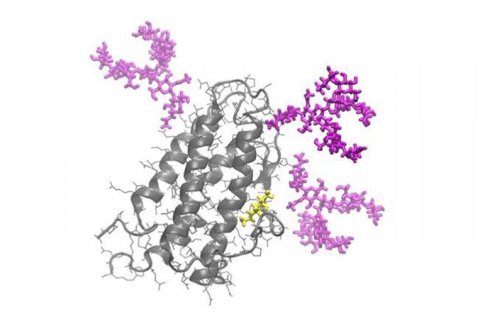Improved method for quality control of biopharmaceuticals
The production of this therapeutically-used EPO and similar biological medicines can now be taken to the next level
Apart from its illicit usage by top athletes, EPO is a medicine for patients who suffer from anemia. The production of this therapeutically-used EPO and similar biological medicines can now be taken to the next level through a method developed by researchers from Utrecht University, the Netherlands, and Copenhagen University, Denmark.

Their method allows to discern and classify EPO variants they design and produce, finetuning their glycosylation content in the process. This is essential in the optimization of the production of EPO variants that benefit each patient best. The results of their study are published in Nature Communications today.
Fast, sensitive and global analysis
With EPO as a showcase, the researchers foresee that their method will generally enable the development and production of custom-designed biological medicines. “Our method offers a fast, sensitive, and global analysis of the many variants that are produced,” first author and PhD student from Utrecht University Tomislav Čaval explains. “This is essential to optimize and guarantee the quality of the production of new and better biological medicines.”

Nowadays, biopharmaceuticals are mostly recombinantly produced, using a living biological source. For the production of EPO, this is a certain type of host cells (i.e. CHO). The authors designed several lines of these host cells that each produce their own specific combination of EPO-variants. For therapeutically used EPO, the challenges are to find the variant(s) that exhibit greater efficacy and longer lifetime in the patients’ body. Therapeutically-used EPO is given intravenously or injected subcutaneously, so the less often this is necessary, the better.
The EMA and FDA will scrutinize such products extensively before allowing them on the market, and we think our method will be extremely helpful for such analyses
The efficacy and the lifetime of therapeutically-used EPO variants are related to the nature of the glycosylation the protein harbors. This can be designed by the specific line of host cells that is used for the production of EPO. In their publication in Nature Communications, the Dutch and Danish researchers show how they managed to discern twenty-four ‘glycoengineered’ EPO variants and were able to classify them. The classification distinguishes EPO variants with varying levels of glycan branching and sylation, as well as the crucial parameters in EPO efficacy and lifetime in the patients’ body.
Blockbuster biopharmaceuticals
Albert Heck, PI on the project, explains: “In this age of patents that expire for many blockbuster biopharmaceuticals, companies are looking for biosimilars and ideally biobetters. These are products alike the original, albeit improved in their efficacy by small modifications in the protein or protein glycosylation. The EMA and FDA will scrutinize such products extensively before allowing them on the market, and we think our method will be extremely helpful for such analyses.”
This research was supported by the Netherlands Organization for Scientific Research through their funding of the large-scale proteomics facility Proteins@Work (project 184.032.201), embedded in the Netherlands Proteomics Centre, and through the Gravitation Program of the Institute for Chemical Immunology, grant 024.002.009. AJRH acknowledges further support by the NWO TOP-Punt Grant 718.015.003. This project received additional funding from the European Union’s Horizon 2020 research and innovation programme under grant agreement 686547 (MSMed).

